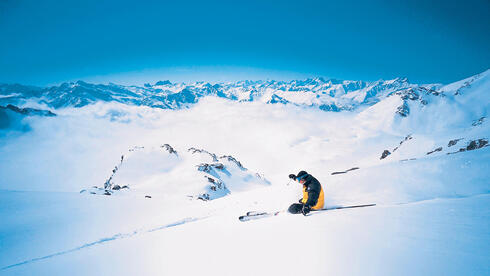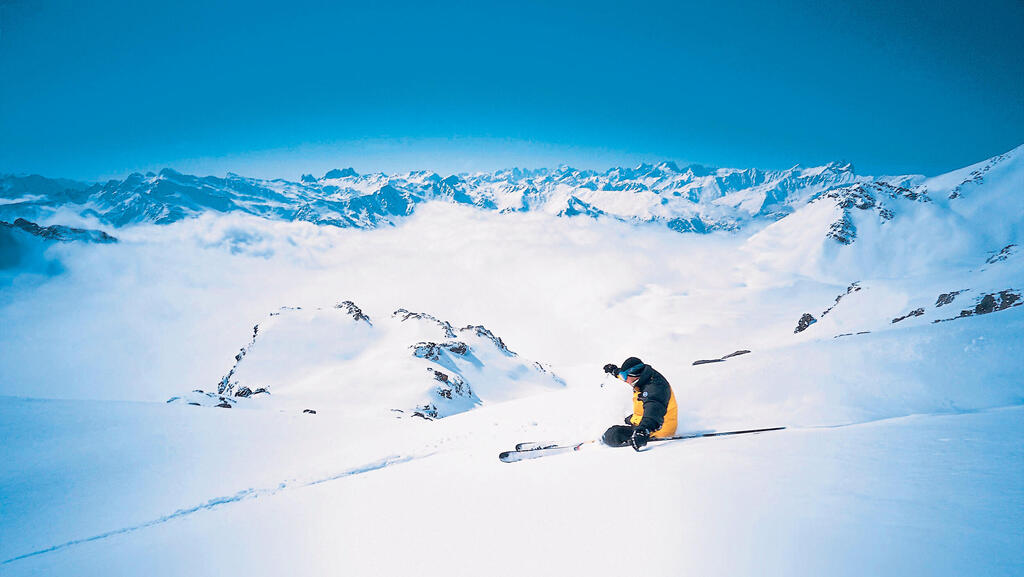
Melting away: Only 15 countries left to host Winter Olympics amid rising temperatures
As snowpacks diminish, the future of winter sports hangs in the balance.
The Olympic Games that recently concluded in Paris were an unforgettable event. However, there is something that many participants and spectators would prefer to forget: the intense heat that affected some of the competition days. Olympic committees have realized in recent years that increasingly extreme weather, driven by climate change, requires elite athletes to prepare for events under severe heat, potentially affecting their performance and even their ability to compete. But a new challenge looms: the Winter Olympics, set to be held in Milan in February 2026, are facing the reality of shrinking snowpacks in a warming world.
Thomas Bach, president of the International Olympic Committee, hinted at a press conference during the opening of the Paris Olympics that the effects of climate change could disrupt the timing of future games. "We need to examine whether our calendar should be adapted to climate change and global warming, and this is already relevant for the upcoming Winter Games," Bach said. The reason: there is a growing shortage of natural snow in certain areas due to rising temperatures, which also threatens the existence of the global snow sports industry. This industry not only provides enjoyable vacations for many but also supports Olympic athletes' training on snowy slopes and allows young people to engage with the sport, potentially pursuing it as a career.
Of the 15 winter sports, seven are particularly affected by temperature and snow conditions (including alpine skiing, snowboarding, and ski jumping). Last year, the International Olympic Committee discovered through a study that by 2040, only ten countries will be able to host the Winter Olympics and meet the necessary criteria—such as temperatures below 0 degrees Celsius during the games. Currently, there are 15 such countries. "These data make it even more clear that we need to address very quickly the dramatic impact climate change is having on winter sports at the Winter Games," Bach emphasized.
Another study, conducted by the University of Waterloo in Canada, found that if global greenhouse gas emissions are not dramatically reduced, by the end of the century, only one of the 21 previous Winter Olympics host cities—Sapporo, Japan—will be able to provide fair and safe conditions for snow sports competitions. If humanity succeeds in achieving the goals of the global Paris Agreement to reduce greenhouse gas emissions and curb climate change, the number of suitable cities would increase to eight, but the chances of this happening appear slim based on current efforts. Four former host cities—Chamonix, Sochi, Grenoble, and Garmisch-Partenkirchen—would not be able to host the games even under a scenario of significant greenhouse gas reductions.
Researchers found that the average daytime temperature in February in cities that have hosted the Winter Olympics in the past has steadily risen—by 0.4 degrees Celsius on average for games held from the 1920s to the 1950s; by 3.1 degrees Celsius for games from the 1960s to the 1990s; and by 6.3 degrees Celsius in the 21st century (including the most recent games held in Beijing in 2022). In the coming decades, this temperature could increase by another 2 to 4.4 degrees Celsius, depending on the actions humanity takes to minimize the damage. Regardless, most European destinations may not be cold and reliable enough to host the Winter Games by the 2050s.
Less snow, more injuries
The last three Winter Olympics have recorded the highest injury rates in skiing. Researchers surveyed international athletes and coaches and found that 89% of them believe changing weather patterns affect competition conditions, and 94% fear that climate change will impact the future development of their sport. They also noted that higher rates of falls and injuries could be partially attributed to warmer temperatures and poor snow conditions. In any case, the last three Winter Olympics have recorded injury rates 55% higher than previous Winter Games for skiing.
This trend of rising winter temperatures has also caused the Olympic Committee to delay announcing the location for the 2030 Winter Olympics. It was finally decided that the games would be held in the French Alps in 2030 and in Utah in 2034. After a visit to Salt Lake City in April, a member of the IOC delegation said the organization was "pretty sure we can do it here until 2050, with all the climate reports we've read," but that 2060 and beyond pose a challenge even for the famous ski town.
The Winter Olympics could be limited to more northern locations, such as Calgary and Alberta in Canada, or pushed to higher altitudes. However, this specific issue highlights a broader problem that will gradually increase and not just appear every four years: snowy towns that benefit from ski tourism are already suffering from thinning snow, especially on the lower slopes. The lack of snow has become a visible symbol of climate change's effects, and more than 2,200 ski resorts in 28 European countries are already recognizing the trend and looking ahead with concern. Almost half of the 169 ski resorts that have closed since 1951 did so due to a lack of snow. By the end of the century, the Snow and Avalanche Research Institute warns that only resorts above 2,500 meters will have enough natural snow to stay open. This is an industry that generates $30 billion a year for Europe, and in France alone, 250 ski resorts employ about 120,000 workers.
Snow cannons need cold too
The Beijing 2022 Winter Olympics used 100% artificial snow, but this too may contribute to warming. According to a study published last year in the scientific journal Nature, about half of the ski resorts in Europe face a "very high risk" of snow shortages in a 2-degree warming scenario. This means there is a risk of closure as they may not be able to provide tourists with a smooth and enjoyable skiing experience, if at all. With a 4-degree warming scenario, which is a possible outcome if current trends continue, 89% of ski resorts will be at high risk of losing their snow cover. As a result, the opportunity to enjoy a snowy skiing vacation will be mainly in high-altitude peaks—where the more prestigious ski resorts are typically located—which could make snow sports an even more exclusive domain for the wealthy, in a sport that is already less accessible to the general population.
But is there a technological solution that would at least allow skiing seasons and the Winter Olympics to continue? A partial answer lies in snow cannons, which are already used at ski resorts to produce artificial snow during the season. However, they can only operate when it's cold enough, and making snow and keeping it cold requires energy and water—both of which are becoming increasingly scarce in a warming world. Water is becoming scarcer in many areas, and using more polluting fuels to generate energy for snow cannons further contributes to climate change.
The Winter Olympics held in Vancouver in 2010, Sochi in 2014, and PyeongChang in 2018 all relied to some extent on artificial snow, but the use in Beijing two years ago was unprecedented: 100% artificial snow. According to the organizers, the equipment used was fully based on renewable energy, and many steps were taken to conserve water. Unlike what is done at many ski resorts worldwide, no chemicals were used in the snowmaking process in Beijing to minimize the impact on the local ecosystem.















